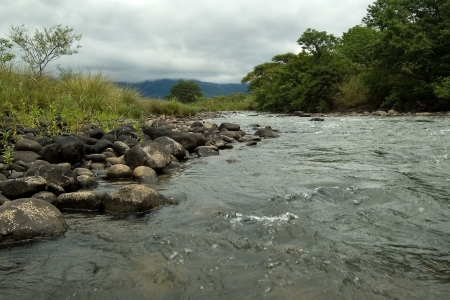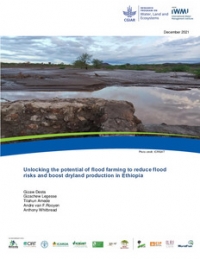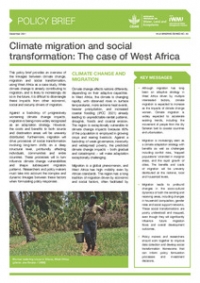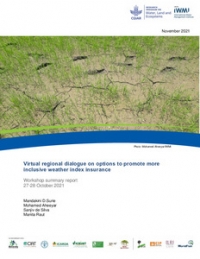Although dams are critically important for Africa's water security and economy, research has also revealed a public health downside to their development. These structures – so vital to addressing the continent's climate crisis – often provide the perfect breeding conditions for mosquitoes. This potentially undermines the continued progress of malaria eradication efforts, which over the past two decades has brought about a 40% decline in transmission rates across sub-Saharan Africa.
The scale of the risk that dams pose is laid out in an article recently published in Nature. While previous research has mostly been confined to large dams (defined as being at least 15 meters high, with a water storage capacity of at least 3 million cubic meters), the new study also considered the impacts of more prevalent small dams (typically less than 15 meters in height, with a storage capacity below 3 million cubic meters). This is the first study to examine the aggregate impact of small dams on malaria transmission relative to larger dams.
A disproportionate impact on transmission
WLE-supported researchers superimposed vector distribution data on 4,907 small dams and 258 large dams across 4 river basins in sub-Saharan Africa (the Limpopo, Omo-Turkana, Volta and Zambezi). Water bodies were identified in each basin using a water classification data set managed by the European Commission's Joint Research Center (JRC). Annual malaria incidence data were obtained from the Malaria Atlas Project (MAP) database for the years 2000, 2005, 2010 and 2015.
The results indicated that the total annual number of malaria cases attributable to dams of either size across the basins was 0.9-1.7 million, depending on the year. However, between 77-85% of cases were due to small dams; the researchers concluded that the cumulative threat posed by small dams was 2 to 7 times greater than their larger counterparts. The results suggest that past efforts to approximate the aggregate malaria impacts of water storage infrastructure across sub-Saharan Africa drastically underestimated the risk.
A risk born of proximity
The greater threat posed by small dams reflects their prevalence and proximity to local communities. The number of small dams out-numbered large dams in all four basins, mainly due to their relatively low construction costs. Since most of these dams are meant for small-scale irrigation and livestock watering, they tend to be located close to communities. In contrast, the benefits of larger dams, typically electricity and large-scale irrigation, can be realized great distances from the actual dam and there is often little incentive for elevated populations in the vicinity of such dams.
Conditions in small reservoirs may also be more conducive to mosquito breeding. The shoreline slopes of small reservoirs tend to be lower than in the reservoirs created by large dams. Gentle slopes generally correspond to poor drainage, thereby promoting the persistence of surface water and the formation of stable pools convenient for mosquito breeding; mosquito larvae live for about 15 days in water. In contrast, steeper slopes facilitate drainage and reduce the likelihood that pools will form, making it more difficult for mosquitoes to complete the aquatic stage of their lifecycle.
Mitigating the risk of malaria
Potential control measures involve the placement, design and operation of dams. Decisions on dam location should consider where malaria transmission is already high and how variations in topography can render some areas more susceptible than others. Planners should also consider climate change – and how malaria threats may evolve as conditions shift over time.
Design needs to focus on effective drainage and preventing the formation of shallow pools and puddles around the reservoir shore where mosquitoes can breed – in many places exacerbated by the hoofprints of cattle brought to reservoirs to drink. Finally, reservoir water levels can also be manipulated to ensure habitats are less favorable for mosquito larvae. Experience in India and elsewhere suggests that combining fluctuation and rapid drawdown can be highly effective in killing larvae.
Some 14.8 million people live close to the dams in the four basins studied – approximately 80% of them in malaria-prone areas. Across sub-Saharan Africa, at least 160 more large dams and many more small dams are currently under construction. This is a cause for concern and requires intensified malaria control efforts.
In the rush to enhance Africa's capacity to adapt to climate change and address the continent's critically low per capita water storage capacity, we risk exposing millions more to malaria. Currently, too little thought is given to the possible public health implications of small and large dam construction. More needs to be done to integrate malaria control into water resource planning. The key challenge in the years ahead is figuring out how dam builders and operators can work with public health agencies to mitigate the serious health threat that dams pose.
---
Thrive blog is a space for independent thought and aims to stimulate discussion among sustainable agriculture researchers and the public. Blogs are facilitated by the CGIAR Research Program on Water, Land and Ecosystems (WLE) but reflect the opinions and information of the authors only and not necessarily those of WLE and its donors or partners.
WLE and partners are supported by CGIAR Trust Fund Contributors, including: ACIAR, DGIS, FCDO, SDC, Sida and others.

















